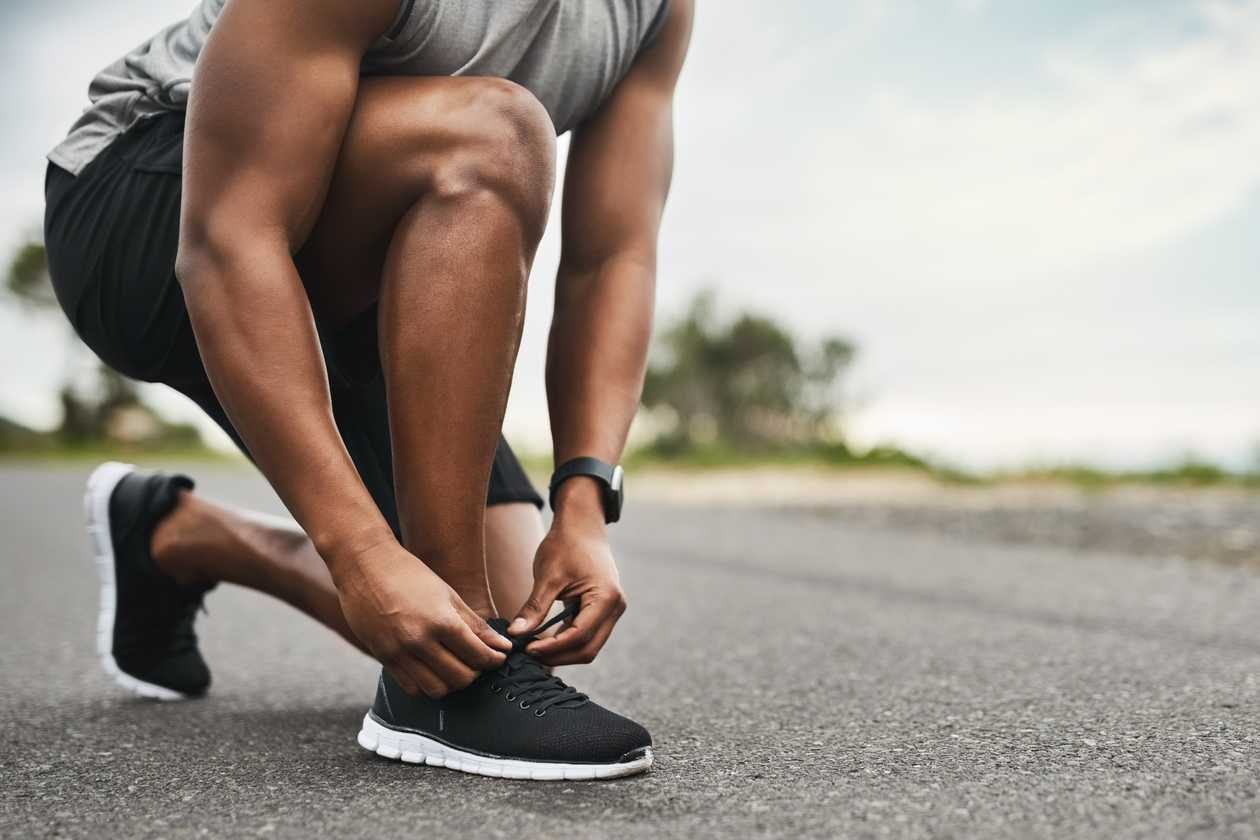- Empty cart.
- Continue Shopping
How to Choose the Right Athletic Shoes

When it comes to sports and physical activities, one of the most crucial elements for success and injury prevention is choosing the right athletic shoes. Whether you’re an avid runner, a basketball enthusiast, a tennis player, or just someone who enjoys hitting the gym, having the proper footwear can make a significant difference in your performance and overall comfort.
Why Proper Athletic Shoes Matter
Before we delve into the details of choosing the right athletic shoes, it’s essential to understand why they matter so much. The right shoes provide a multitude of benefits, including:
- Injury Prevention: Properly fitting athletic shoes can reduce the risk of injuries by providing adequate support, stability, and cushioning for your feet.
- Enhanced Performance: The right shoes can improve your performance by providing the necessary traction, grip, and responsiveness for your chosen sport or activity.
- Comfort: Athletic shoes that fit well and suit your foot type can significantly enhance your overall comfort during exercise.
- Durability: Investing in high-quality athletic shoes can save you money in the long run, as they tend to last longer and withstand the rigors of regular physical activity.
Now that we’ve established the importance of choosing the right athletic shoes let’s explore the key factors to consider.
Know Your Foot Type
Understanding your foot type is the first step in selecting the right athletic shoes. There are three primary foot types:
- Pronated Feet: Pronation is the natural inward rolling motion of the foot while walking or running. If you have flat feet or low arches and your feet roll excessively inward, you have pronated feet. Look for stability or motion control shoes that provide extra arch support and cushioning.
- Supinated Feet: Supination, or underpronation, is the opposite of pronation. It occurs when your feet roll outward too much, putting extra stress on the outer edge of your foot. If you have high arches and supinated feet, choose shoes with ample cushioning and flexibility.
- Neutral Feet: If you have a regular arch and your feet exhibit a normal, balanced motion while walking or running, you likely have neutral feet. You have the advantage of a wide range of shoe options, including neutral or cushioned shoes, depending on your specific activity.
Determine Your Activity
The type of athletic shoes you need also depends on the specific physical activity you’ll be engaging in. Different sports and activities have unique requirements, and wearing the wrong shoes can lead to discomfort and potential injuries. Here are some common activities and the corresponding shoe types:
- Running: For runners, the right shoe is essential. Running shoes come in various categories, such as neutral, stability, and motion control, catering to different foot types and running styles. Consider factors like cushioning, arch support, and terrain when choosing running shoes.
- Basketball: Basketball players need shoes that offer excellent ankle support, as well as good cushioning and traction for quick movements on the court. High-top basketball shoes are a popular choice for added ankle stability.
- Tennis: Tennis players require shoes with durability, lateral support, and grip for quick lateral movements on the court. Look for tennis-specific shoes with reinforced outsoles and ample cushioning.
- Cross-Training: Cross-training shoes are versatile and suitable for various activities like weightlifting, aerobics, and HIIT workouts. They provide a balance of cushioning and stability, making them ideal for gym-goers.
- Walking: If your primary activity is walking, opt for walking shoes that offer excellent arch support and cushioning for prolonged comfort during leisurely strolls or brisk walks.
Get Proper Sizing
Now that you know your foot type and the type of shoe you need for your activity, it’s crucial to get the right size. Ill-fitting shoes can lead to discomfort, blisters, and even long-term foot problems. Here’s how to ensure proper sizing:
- Measure Your Feet: Have your feet measured by a professional at a shoe store. Foot size can change over time, so it’s essential to get an accurate measurement.
- Try on Shoes in the Afternoon: Feet tend to swell slightly during the day, so it’s best to try on shoes in the late afternoon or early evening to ensure they’ll fit comfortably all day.
- Leave Some Space: There should be about a thumb’s width (around half an inch) of space between your longest toe and the front of the shoe. This allows room for natural foot movement.
- Consider Width: Shoe width is as important as length. Make sure the shoes aren’t too narrow or too wide for your feet, as this can lead to discomfort and blisters.
Test for Comfort
Once you’ve found a pair of shoes that match your foot type, activity, and size, it’s time to test for comfort. Here’s what to do:
- Walk or Run: Take a few steps or jog in the store to see how the shoes feel. Pay attention to any discomfort, pressure points, or slipping.
- Check the Fit: Ensure that the shoes snugly hold your heels in place without excessive slipping. Also, check for any rubbing or irritation on your feet.
- Consider Orthotics: If you have custom orthotics or insoles, bring them with you when trying on shoes to ensure they fit comfortably inside.
Assess the Arch Support
Arch support is a critical factor in athletic shoes, especially for those with pronated or supinated feet. Here’s how to assess the arch support in your potential shoe choices:
- Feel the Arch: Press your finger against the arch area of the shoe’s insole. It should provide firm but comfortable support for your arches.
- Ask About Removable Insoles: Some athletic shoes have removable insoles, allowing you to replace them with custom orthotics if needed. Check if this is an option for your chosen shoe.
Consider the Cushioning
Cushioning is essential for shock absorption and overall comfort. However, the level of cushioning you need can vary depending on your activity and personal preference. Here’s what to consider:
- Running: Runners often prefer shoes with ample cushioning, especially for longer distances. Look for shoes with responsive midsoles that provide a good balance of cushioning and energy return.
- Impact Sports: Sports with high-impact movements, like basketball or aerobics, benefit from extra cushioning in the heel and forefoot to reduce the stress on your joints.
- Minimalist Shoes: Some athletes prefer minimalist or barefoot-style shoes, which offer minimal cushioning and encourage a more natural stride. These are best suited for experienced athletes with proper running form.
Examine the Outsole
The outsole, or the bottom of the shoe, plays a significant role in traction and stability. Consider the following when examining the outsole:
- Tread Pattern: Look at the tread pattern on the outsole. It should be appropriate for your intended activity. For example, running shoes typically have a more streamlined tread, while hiking shoes have a more aggressive, lugged pattern.
- Material: The outsole material should provide good grip on the surface you’ll be using them on. Rubber outsoles are common and offer reliable traction.
Budget Wisely
While it’s tempting to go for the most expensive athletic shoes with all the latest features, it’s important to set a budget and stick to it. High-quality athletic shoes can be found in a range of price points, so you don’t necessarily need to break the bank. Remember that the most expensive shoe isn’t always the best for your specific needs.
Seek Expert Advice
If you’re unsure about which athletic shoes to choose, don’t hesitate to seek advice from professionals. Visit a specialty sports store where knowledgeable staff can assess your needs, perform gait analysis, and recommend suitable options based on your foot type and activity.
Don’t Forget About Socks
Lastly, don’t underestimate the importance of choosing the right socks to complement your athletic shoes. Socks play a role in moisture management, blister prevention, and overall comfort. Opt for moisture-wicking socks that provide cushioning and support where needed.
In Conclusion, Choosing the right athletic shoes is a decision that should not be taken lightly. Your feet are your foundation for physical activity, and investing in the right pair of shoes can greatly impact your performance and overall well-being. By considering your foot type, activity, size, comfort, and other factors outlined in this guide, you can make an informed choice that will support your fitness goals and keep you comfortable during every step of your athletic journey. Remember that the right shoes aren’t just an accessory; they’re an essential tool for success and injury prevention in the world of sports and fitness. So, lace up, step out, and conquer your athletic endeavors with confidence in the perfect pair of athletic shoes.








